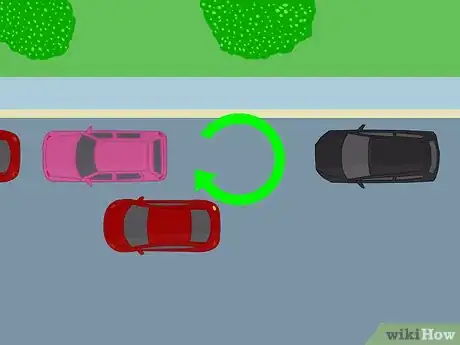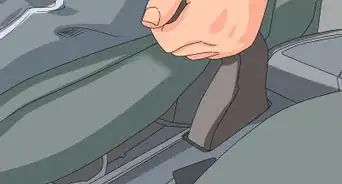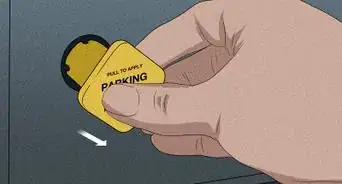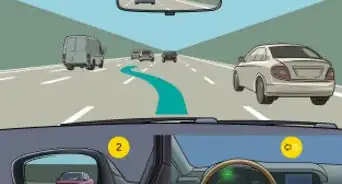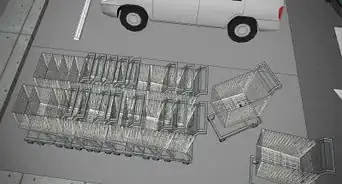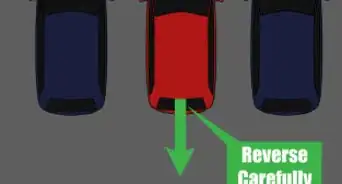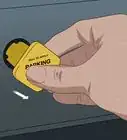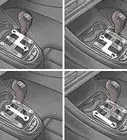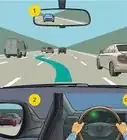This article was co-authored by Ibrahim Onerli and by wikiHow staff writer, Hannah Madden. Ibrahim Onerli is a Driving Instructor and the Manager of Revolution Driving School in New York City. His mission is to make the world a better place by teaching safe driving. Ibrahim trains and manages a team of over eight driving instructors. He specializes in teaching defensive driving and stick shift driving.
wikiHow marks an article as reader-approved once it receives enough positive feedback. This article received 17 testimonials and 100% of readers who voted found it helpful, earning it our reader-approved status.
This article has been viewed 2,200,450 times.
You’re circling the block, looking for parking spots, but all you can find is parallel parking on the street. No biggie: you’ve got this. But if you’re still feeling a bit nervous about parallel parking, you’re not alone—many drivers, new and experienced alike, get a little bit flustered when it comes time to parallel park. That’s where we can help! Whether you’re getting ready to take your driver’s test or you just need a refresher, read through our article to get better at parallel parking and nab those in-demand parking spots.
Things You Should Know
- Put your turn signal on to indicate that you’re parking as you drive up next to the vehicle in front of the space.
- Crank your steering wheel to the right, then slowly start reversing into the spot.
- Straighten the wheel once your rear tire is 18 in (46 cm) from the curb, then keep backing in.
- Pull forward to adjust if you need to before putting your car in park.
Steps
Community Q&A
-
QuestionDo you have to use a turn signal when parallel parking?
 wikiHow Staff EditorThis answer was written by one of our trained team of researchers who validated it for accuracy and comprehensiveness.
wikiHow Staff EditorThis answer was written by one of our trained team of researchers who validated it for accuracy and comprehensiveness.
Staff Answer wikiHow Staff EditorStaff AnswerYes, using a turn signal is required for parallel parking. It lets the drivers behind you know that not only will you be stopping, but you'll be reversing, too.
wikiHow Staff EditorStaff AnswerYes, using a turn signal is required for parallel parking. It lets the drivers behind you know that not only will you be stopping, but you'll be reversing, too. -
QuestionHow do I pick a place to parallel park?
 Community AnswerYour space should be about one and a half times the size of your car. It's always better to go with a bigger space rather than a smaller one.
Community AnswerYour space should be about one and a half times the size of your car. It's always better to go with a bigger space rather than a smaller one. -
QuestionHow far from the curve do you need to be?
 Community AnswerYour tires should be within a foot of the curb so your car isn't sticking out into the traffic lane.
Community AnswerYour tires should be within a foot of the curb so your car isn't sticking out into the traffic lane.
Warnings
- Always check your surroundings for people, bicyclists, and other cars while parallel parking.[6]⧼thumbs_response⧽
References
- ↑ http://www.dmv.org/how-to-guides/parallel-parking.php
- ↑ https://www.penndot.pa.gov/PennDOTWay/pages/Article.aspx?post=46
- ↑ https://www.dmv.ca.gov/portal/handbook/california-driver-handbook/parking/
- ↑ http://www.dmv.org/how-to-guides/parallel-parking.php
- ↑ https://www.npr.org/2010/01/23/122880263/the-formula-for-perfect-parallel-parking
- ↑ https://www.dmv.org/how-to-guides/parallel-parking.php
About This Article
To parallel park, first pull up next to the car in front of the open parking spot. Leave about 2 to 3 feet (½ to 1 meter) of space between your car and the other car. Turn on your blinker so other drivers know you’re parallel parking. Next, reverse until the middle of your car is lined up with the rear bumper of the other car. Then, turn the steering wheel all the way toward the curb, and slowly reverse at a 45-degree angle until you can see the headlights of the car parked behind you in your driver's side mirror. Slowly straighten out your wheel as you continue to reverse into the parking spot. Finally, stop reversing once your car is parallel with the curb. You may have to turn your wheel to the right and drive forward to correct your car’s angle in the spot. Finally, always make sure there are 12 to 18 inches of space (30 to 45 cm) between your car and the curb. If you want to learn how to make adjustments to your vehicle in tight parking spaces, keep reading!

